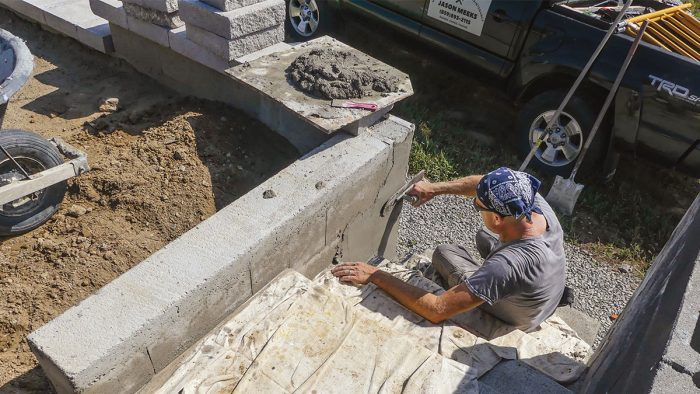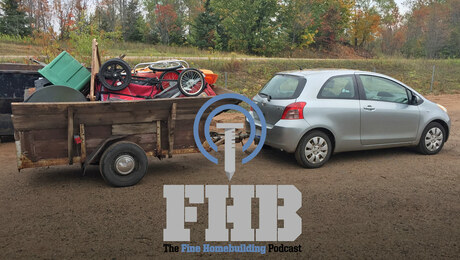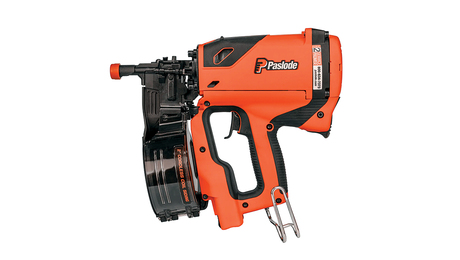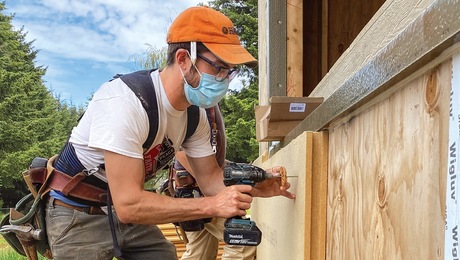Make Your Own Parging Mix
The most common way to make your own parging mix is to use either Type S mortar for block or Type N for brick and add a concrete bonding additive.

I need to parge a small section of concrete block wall on the exterior of my house to make it more attractive. I see that both Sakrete and Quikrete make bags of parging mix, but there are no retailers in my area that sell them. How do I make my own parging mix, and could you share any pointers on mixing and applying it?
— Mark Petersen; Waco, Ky.
Steven Fechino, Engineering and Construction Manager at Mortar Net Solutions, Replies:
Specialty Portland cement–based mortars for smooth and decorative masonry parging are often available at masonry supply yards. However, if you can’t find these mixes, you can make your own. When I first started out, the mix for parging concrete block was Type S mortar combined with sand and water in the same proportions used for laying block, with an additional shovel or so of lime added to make the mix more workable and enhance its bond.
If you were parging over brick instead of block, you’d use softer Type N mortar. Today, the most common way to make your own parging mix is to use either Type S mortar for block or Type N for brick and add a concrete bonding additive. The amount of bonding agent you need to add depends on the exact product you use. Akona Concrete Bonding Additive calls for 1 gal. per 80-lb. bag of Type S mortar.
Like any new trowel skill, it’s best to start in the least conspicuous area, which gives you a chance to get better before working on more visible spots. The first step is apply a slurry coat. A slurry coat is a watered-down version of the same mortar mix you’re using for parging, including the bonding additive.
It fills the tiny voids and crevices in the block, stone, or brick and improves the bond between the parge coat and the masonry underneath. Thin the mix with water until the slurry is the consistency of thick house paint and brush it on with a masonry brush.
It’s important to apply the parge coat before the slurry coat dries. Apply the parging mix with a masonry finishing trowel. Load up the trowel with mix and pull it up as you spread it onto the masonry. A smooth substrate might need only a 3/8-in. coat, while a rough surface might need a 1-in. layer. You can trowel the surface to make it smooth or add texture using a trowel, brush, or sponge.
Let the coat set up for a few minutes before texturing. In hot weather, try to keep parged areas moist and shaded from direct sun for a couple days. Parging lasts longer when water vapor can move through it, which means paints and sealants will shorten its life. And remember, parging is a way to achieve a more attractive or interesting appearance—it can’t fix structural defects.
RELATED STORIES
Need help?
Need help with figuring out how to make your own parging mix or have a different question? Get answers you can trust from the experienced pros at FHB. Email your question to Experts@FineHomebuilding.com.





























